In Focus: The garden paintings bursting with colour that defined the craft of Ivon Hitchens
It's 40 years since the death of Ivon Hitchens, and the painter is being honoured with exhibitions at the Garden Museum in London and Pallant House in Chichester. Charles Derwent takes a look at the artist's key works.
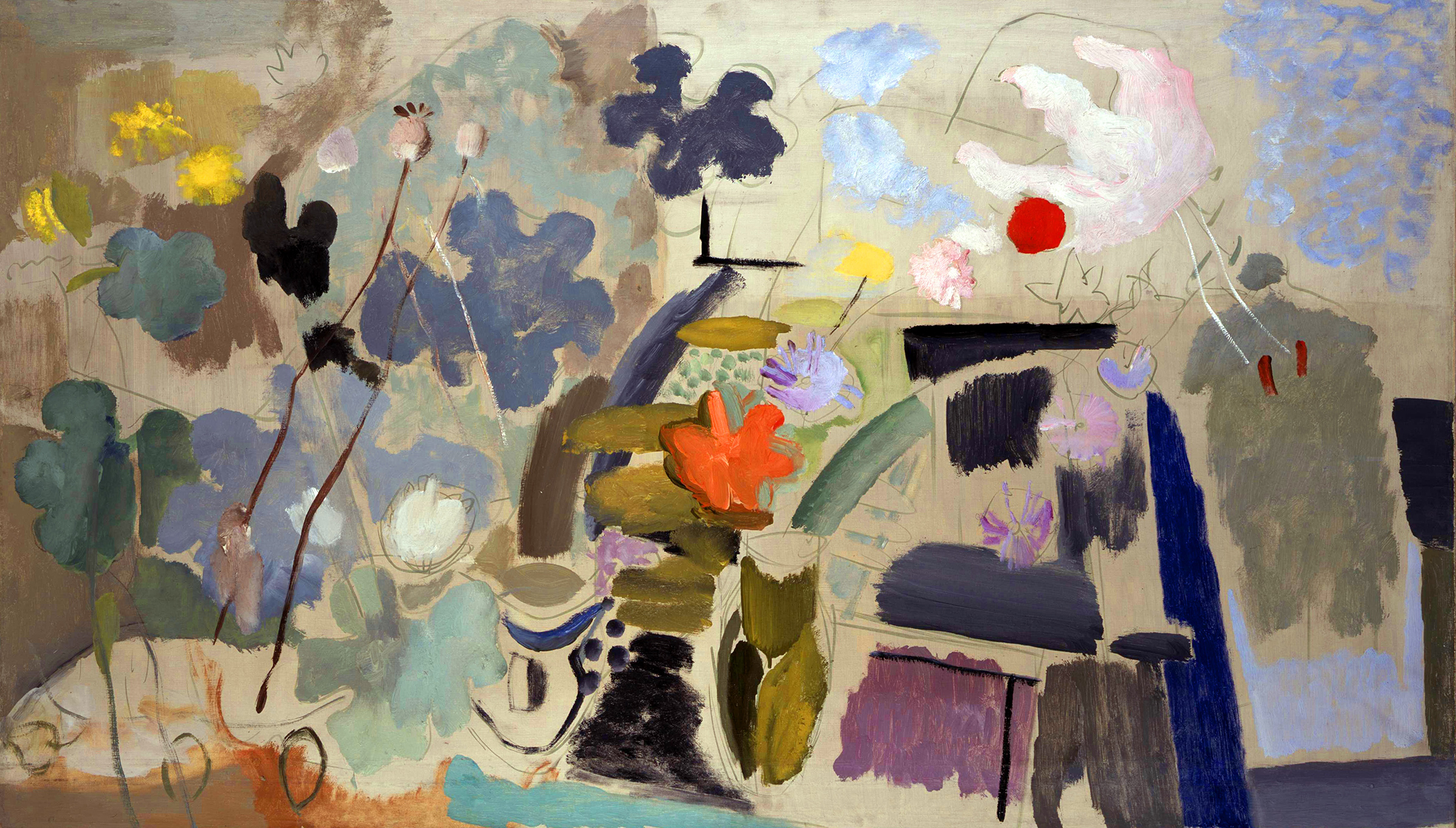

Writing in the Weekend Review in 1932, the painter Paul Nash touched on a problem that would haunt his artist countrymen for decades to come. How, Nash asked, was it possible to ‘go modern’ as well as still ‘being British’? The question was self-answering: it wasn’t.
Modernism, with a capital ‘M’, was International with a capital ‘I’. Still, with rare exceptions, Nash’s coevals set about squaring this circle and no one more avidly than Ivon Hitchens.
In 1936, four years after Nash posed his conundrum, Hitchens, living in Hampstead, painted a picture called Triangle to Beyond. Now in the Tate, it would be his most abstract work and his most Modern. Three years later, however, its maker performed a sharp volte-face.
In 1939, Hitchens bought six acres of woodland near Petworth in West Sussex and, the following year, he moved his young family there, first to a gypsy caravan and then a cobbled-together house-cum-studio called Greenleaves.
Here, for 40 years, he would paint local landscapes, woods, flowers. What could be more English than hornbeams, or less Modern? If Nash had shown that a choice was to be made between the two, then Hitchens, in leaving London, seemed to have opted for Britishness.
And yet, if his paintings were not International, they were deeply, if diffidently, experimental. This had been the case long before Sussex. At first glance, Garden Conservatory (1935), painted in Hampstead at about the same time as Triangle to Beyond, looks like a flower painting. It is. The horticulturally minded will spot poppy heads, lilies, nasturtiums. It’s a lovely work, but not, appearances to the contrary, a simple one.
In spatial terms, Hitchens refuses to let the eye settle. The lily to the right sits in the painting’s background, but its polleny anthers kick at the foreground like a dancer’s feet. The orange blob of a nasturtium presses up against the picture plane, its sketchy leaves indefinably behind. The work feels choreographed — ‘My pictures are painted to be listened to,’ Hitchens had said — and its dance plays off depth against width.
Sign up for the Country Life Newsletter
Exquisite houses, the beauty of Nature, and how to get the most from your life, straight to your inbox.
Garden Conservatory is ambiguous in other ways, too. Like an inside-out version of Matisse’s flower-papered rooms, the space Hitchens conjures is not quite natural nor manmade. His flowers are real enough, but painted indoors. The outdoors are often seen from inside, even when they are the woods around Greenleaves.
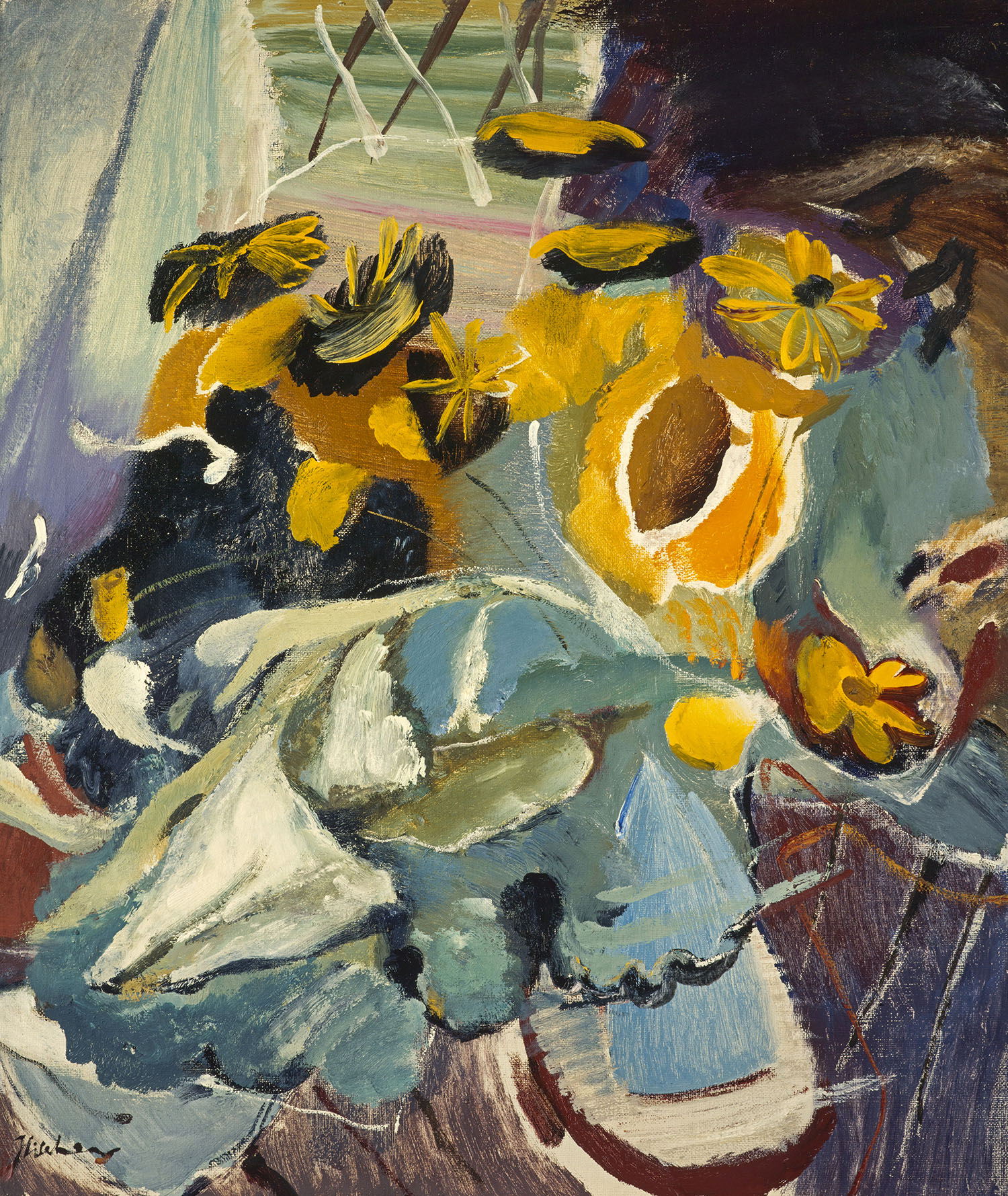
If the Sussex landscape was a source of vast inspiration to Hitchens, his paintings of it were more complex than they seem. Both Studio with Open Doors (1942) and Irises — Greenleaves (about 1952) conjure up a halfway-world, neither indoors nor out, romantic nor modern; neither abstract nor representational
The 20 or so works that are on show at the Garden Museum give us a Hitchens at home in this world; a rather larger exhibition, opening at Pallant House Gallery in Chichester, West Sussex, on June 29, suggests how he got there.
One of the earliest works in this show is Triangle to Beyond, mentioned above; one of the last is Roof Painting nr. 2 (The View From My Roof nr. 2), made four decades later in 1977, two years before the artist’s death in Sussex. Much had happened between.
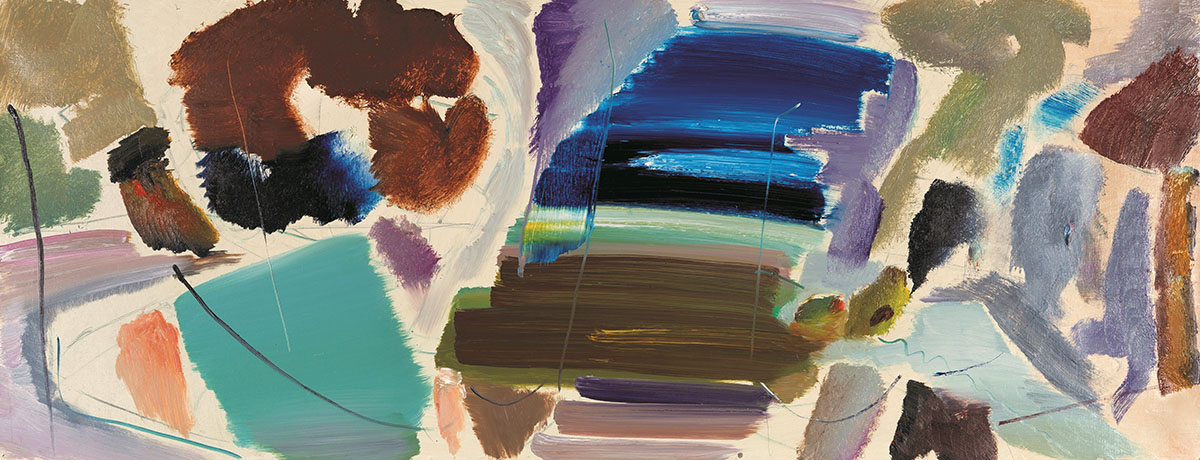
During the war, Hitchens fell foul of Kenneth Clark, who saw flowers and trees as lacking in rigour. Asked whether the man who painted them might not be given some official war work, Clark, who was in charge of dispensing it, sniffed that he might do ‘for some canteen mural’. He presumably ate his words when, a decade later, Hitchens represented Britain at the Venice Biennale.
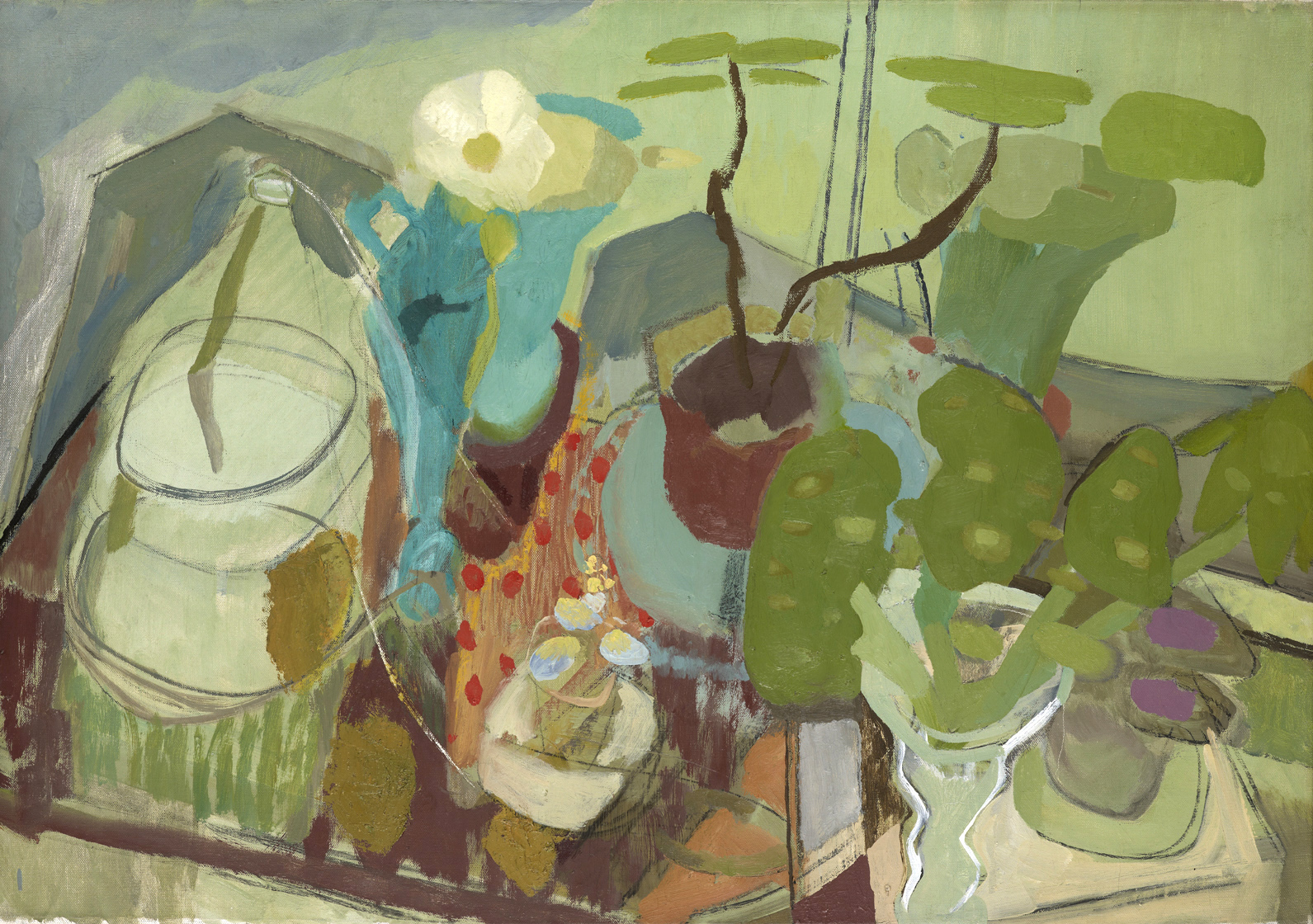
For all that, his reputation remains clouded by prettiness: it is 40 years since the Royal Academy’s monograph Hitchens show, 30 since the Serpentine Gallery’s. This pair of fine exhibitions will help change that.
If Roof Painting is a beautiful work — and it is — it is something more as well. As Hitchens wrote to Herbert Read: ‘The essence of my theory is that colour is space and space is colour.’ He was right. It is his understanding of colour — what pulls the eye forward and pushes it back — that sets this work dancing, as dance it does.
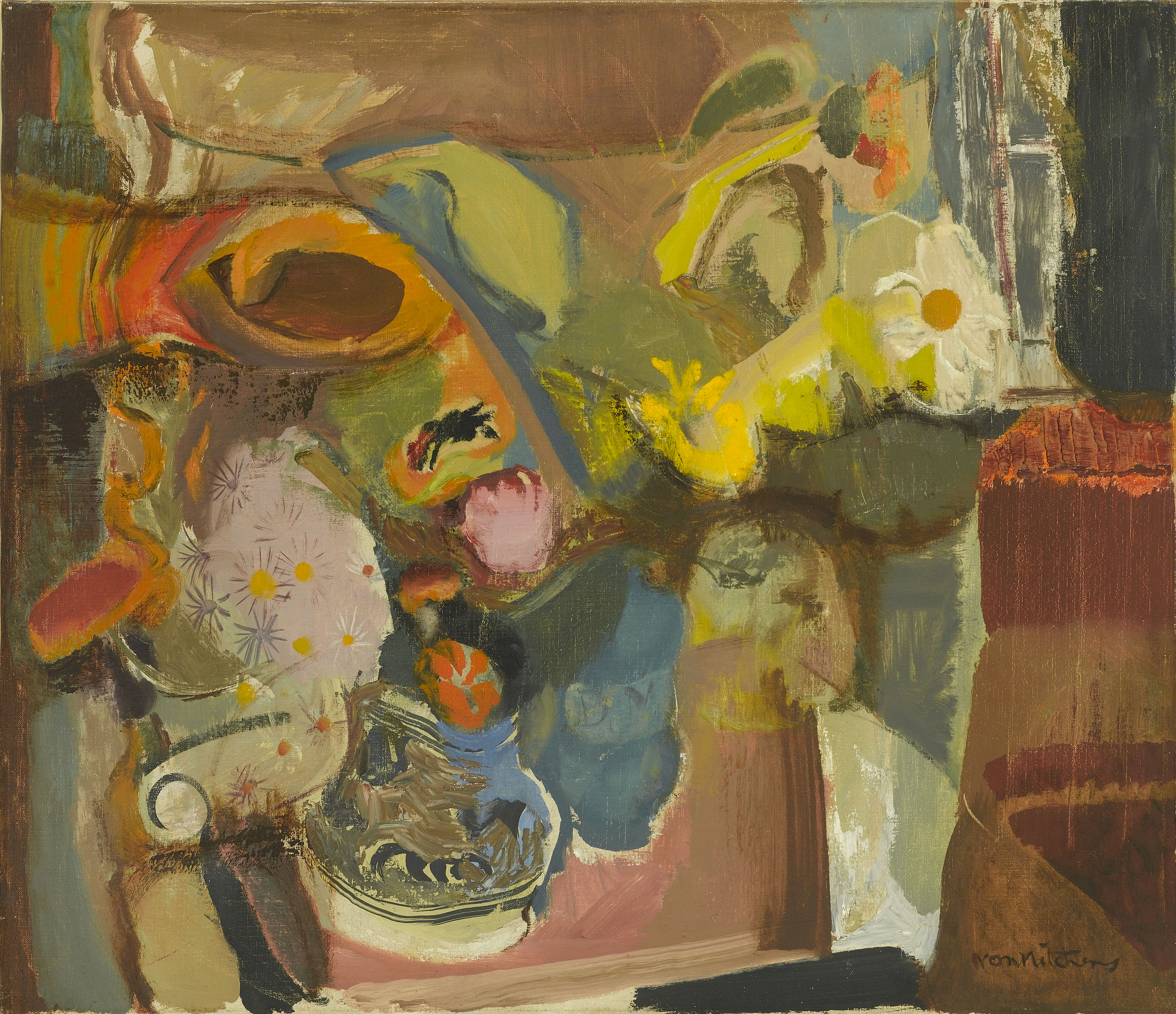
‘Ivon Hitchens: The Painter in the Woods’ is at the Garden Museum in Lambeth until July 15 (www.gardenmuseum.org.uk) while ‘Ivon Hitchens: Space through Colour’ is at the Pallant House Gallery, Chichester, from June 29 to October 13 (www.pallant.org.uk).
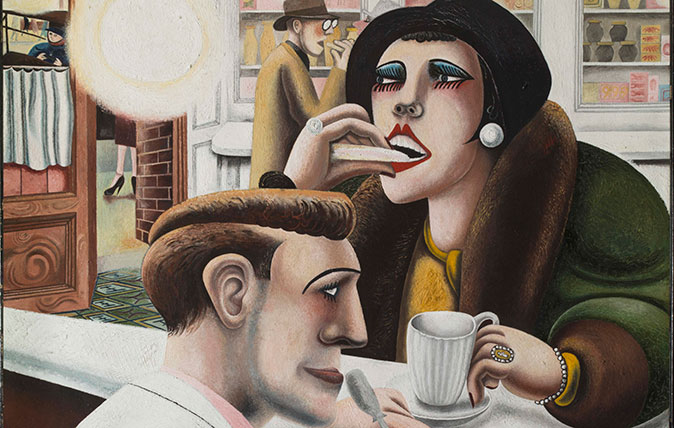
In Focus: The evocative, sensual masterpiece created in the wake of the First World War
Edward Burra was too young to have fought in the First World War, but his powerful oil painting The Snack
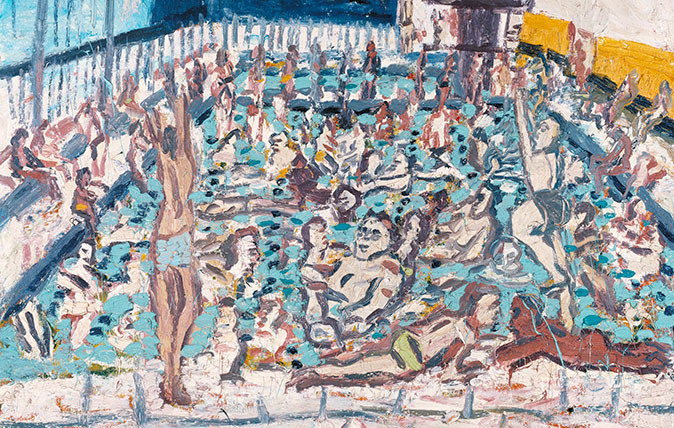
Credit: Leon Kossoff Children's Swimming Pool, Autumn Afternoon 1971. Tate © Leon Kossoff
In Focus: An idyllic sunny afternoon, evoked by a leading light of the School of London
Lilias Wigan takes an in-depth look at Leon Kossoff's Children's Swimming Pool, Autumn Afternoon, one of the pictures on show
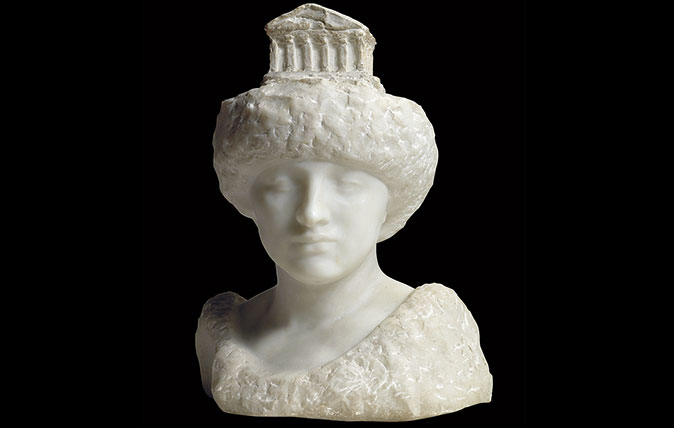
Credit: © Musée Rodin
In Focus: Rodin's quirky take on one of the treasures of the Elgin Marbles
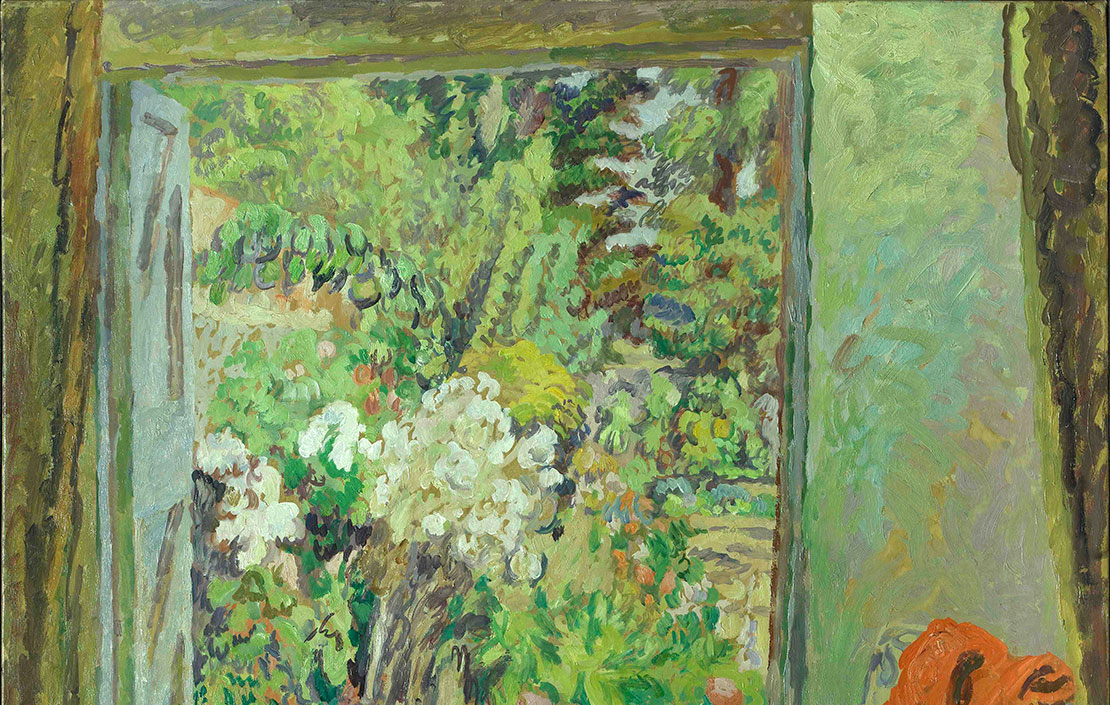
In Focus: The work by a Bloomsbury Group stalwart which fuses nature, nostalgia and Impressionism
Britist artists Duncan Grant's wonderful versatility allowed him to mix traditional and modern, natural and man-made, as this picture on
Country Life is unlike any other magazine: the only glossy weekly on the newsstand and the only magazine that has been guest-edited by HRH The King not once, but twice. It is a celebration of modern rural life and all its diverse joys and pleasures — that was first published in Queen Victoria's Diamond Jubilee year. Our eclectic mixture of witty and informative content — from the most up-to-date property news and commentary and a coveted glimpse inside some of the UK's best houses and gardens, to gardening, the arts and interior design, written by experts in their field — still cannot be found in print or online, anywhere else.
-
 Six rural properties with space, charm and endless views, as seen in Country Life
Six rural properties with space, charm and endless views, as seen in Country LifeWe take a look at some of the best houses to come to the market via Country Life in the past week.
By Toby Keel
-
 Exploring the countryside is essential for our wellbeing, but Right to Roam is going backwards
Exploring the countryside is essential for our wellbeing, but Right to Roam is going backwardsCampaigners in England often point to Scotland as an example of how brilliantly Right to Roam works, but it's not all it's cracked up to be, says Patrick Galbraith.
By Patrick Galbraith